Chick culling
Chick culling or unwanted chick killing is the process of separating and killing of unwanted (male and unhealthy female) chicks, for which the intensive animal farming industry has no use. It occurs in all industrialised egg production whether free range, organic, or battery cage. Worldwide, around 7 billion male chicks are culled per year in the egg industry.[1] Because male chickens do not lay eggs and only those on breeding programmes are required to fertilise eggs, they are considered redundant to the egg-laying industries and are usually killed shortly after being sexed, which occurs just days after they are conceived or after they hatch.[1] Some methods of culling that do not involve anaesthetics include: cervical dislocation, asphyxiation by carbon dioxide and maceration using a high-speed grinder. Asphyxiation is the only method in the United Kingdom,[2] while maceration is the primary method in the United States.[3]
.jpg.webp)
.jpg.webp)
Due to modern selective breeding, laying hen strains differ from meat production strains (broilers). In the United States, males are culled in egg production, since males "don’t lay eggs or grow large enough to become broilers".[3]
Ducklings and goslings are also culled in the production of foie gras. However, because males put on more weight than females in this production system, the females are culled, sometimes in an industrial macerator.[4] Up to 40 million female ducks per year may be killed in this way. The remains of female ducklings are later used in cat food and fertilisers.[5]
History
.jpg.webp)
Prior to the development of modern broiler meat breeds, most male chickens (cockerels) were slaughtered for meat, whereas females (pullets) would be kept for egg production. However, once the industry successfully bred separate meat and egg-producing hybrids—starting in the 1920s and 1930s[6]—there was no reason to keep males of the egg-producing hybrid. As a consequence, the males of egg-laying chickens are killed as soon as possible after hatching and sexing to reduce financial losses incurred by the breeder. Special techniques have been developed to accurately determine the sex of chicks at as young an age as possible.
In November 2018, the "world's first no-kill eggs" were sold to the public in Berlin, Germany.[7]
Methods
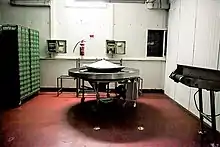
Several methods are used to cull chicks:
- Maceration (also called 'grinding', 'shredding' or 'mincing'); the chicks are placed into a large high-speed grinder.[2]
- Asphyxiation (also called 'gassing' or 'controlled atmosphere killing'); carbon dioxide (CO2) is used to induce unconsciousness and then death.[2][8]
- Cervical dislocation; the neck is broken.
- Electrocution; an electric current is passed through the chick's body until it is dead.[9]
- Suffocation; the chicks are placed in plastic bags.[10]
Permitted methods in the EU
The authorised procedures for killing chicks have been harmonised within the European Union. The regulations initiated in 1976 evolved in 1993, the first directive to specifically take chicks into account.[11] A new directive was adopted in 2009, enacted on 1 January 2013 (replacing the 1993 directive) and last updated on 14 December 2019:[12]
- "Use of a mechanical apparatus causing rapid death" (essentially grinding)
- "Exposure to carbon dioxide" (essentially gassing)
Recommended methods in the US
The American Veterinary Medical Association (AMVA) "Euthanasia" methods include: cervical dislocation, maceration, and asphyxiation by carbon dioxide.[13] The 2005–2006 AMVA Executive Board proposed a policy change, recommended by the Animal Welfare Committee on the killing of unwanted chicks, poults, and pipped eggs. The policy states:
- 'Unwanted chicks, poults, and pipped eggs should be killed by an acceptable humane method, such as use of a commercially designed macerator that results in instantaneous death. Smothering unwanted chicks or poults in bags or containers is not acceptable. Pips, unwanted chicks, or poults should be killed prior to disposal. A pipped egg, or pip, is one where the chick or poult has not been successful in escaping the egg shell during the hatching process.'[14]
US producers announced in 2016 a goal of being able by 2020 to determine the sex of the developing chick long before hatching, so male eggs can be destroyed.[3][15] However in January 2020 they stated that killing day-old male chicks remains unavoidable due to the lack of a viable alternative.[16]
Statistics
.jpg.webp)
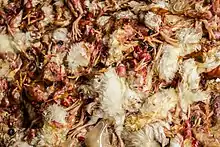
- Worldwide: approximately 7 billion male chicks are culled annually around the world (2015 Poultry Site estimate).[1] Other estimates include 6 billion (June 2016 SMH claim),[17] 4–6 billion chicks (December 2018 The Guardian claim[18]). According to In Ovo cofouder Wouter Bruins in October 2013, the top 20 poultry production countries alone culled 3.2 billion male chicks a year.[19]
- Australia: more than 12 million male chicks are culled annually (June 2016 estimate).[17] Maceration is the primary method used,[20] but gassing is also used.[17]
- Belgium: more than 15 million male chicks are culled annually, 40,000 a day (February 2020 estimate).[8] CO2 gassing is the only method used and happens in two stages: chicks are first stunned and then killed.[8]
- Canada: 22.5 million male chicks are culled annually, nearly 62,000 a day (December 2016 estimate).[21]
- France: 50 million male chicks are culled annually in the egg industry (February 2020 estimate)[22] and around 40 million female ducklings and goslings are culled annually in the foie gras industry (October 2014 estimate).[5] Maceration is the primary method in both industries.[22][5]
- Germany: up to 50 million male chicks are culled annually (October 2019 estimate).[23] Gassing is the primary method.[23]
- Netherlands: 45 million male chicks are culled annually (May 2016 estimate).[24] Gassing is the primary method.[24]
- New Zealand: 2.5 million (April 2001 estimate) to 3 million (June 2016 estimate) male chicks are culled annually.[25][26] Maceration is the primary method.[25]
- Spain: 35 million male chicks are culled annually (March 2020 estimate).[27]
- Switzerland: about 3 million male chicks are culled annually (September 2019 estimate).[28] Gassing is the only method used; maceration was prohibited on 1 January 2020, but rarely used before that date.[28]
- United Kingdom: 30 to 40 million male chicks are culled annually (November 2010 Viva! claim).[29] A November 2010 Telegraph article reported on two undercover operations carried out by animal rights organisation Viva! showing a gassing-method hatchery and a maceration-method hatchery, both located in Preston.[29] Both methods were reportedly 'legal and approved by both the Humane Slaughter Association and the RSPCA', with a British Egg Information Service (BEIS) spokesman saying gassing was used more often than maceration in the UK.[29] In March 2015, a BEIS spokesman insisted that gassing was the only method used in the UK.[2]
- United States: 300 million male chicks are culled annually (January 2020 The Humane Society claim).[30] The Associated Press estimated this number at 200 million in 2009.[31] Maceration is the primary method.[3]
Controversy and phaseout
Animal welfare advocates maintain that many of the current practices surrounding chicken slaughtering are unethical.[32][33][34] Animal rights advocates argue that it is wrong to unnecessarily exploit and kill other sentient beings for food production, including chicks.[35]
Scientific research into alternatives (2010s)
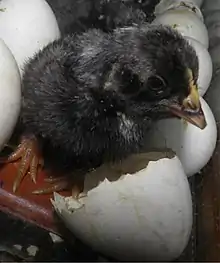
Several technologies may obviate chick culling by determining the sex of a chick before hatching. These technologies rely on measuring eggs (through spectroscopy, chemical assays, or imaging); they can determine a chick's sex within 4-9 days of laying. Some methods require genetic engineering to make male eggs fluorescent. Such methods are attractive not only for ethical reasons but to reduce the costs of employing human cullers and of incubating male eggs. Timothy Kurt, a director from the United States Department of Agriculture, said, "Everyone wants the same thing, and the right piece of technology could solve this right now."[36]
A Unilever spokesperson has been quoted as saying "We have also committed to providing funding and expertise for research and introduction of alternative methods such as in-ovo gender identification (sexing) of eggs. This new technology offers the potential to eliminate the hatching and culling of male chicks."[10]
In 2018, Agriculture and Agri-Food Canada, invested $844,000 to electronically "scan" fertilized eggs to determine if they are male or female.[31]
In September 2019, the Foundation for Food and Agriculture Research, a company that was founded by the United States congress in 2014 will award six contestants from ten countries, $6 million for working entries.[36] United Egg Producers intends to be cull-free by 2020.[36]
CRISPR technology uses a "pair of molecular scissors" to illuminate the male chicks after being conceived and before being placed in the incubator to be hatched, thus eliminating all male chicks from being hatched.[37]
Legal challenge in Germany (2013–2019)
In 2013, the German state of North Rhine-Westphalia issued a decree banning hatcheries from killing chicks, against which two egg hatcheries in the state appealed. [38] As paragraph one of Germany's Animal Welfare Act stipulates that "No-one shall inflict pain, suffering or harm on a pet without a reasonable cause," a lower court ruled that killing for food production was a "reasonable" ground.[38] This led to a challenge in the Federal Administrative Court in Leipzig.[38] On 13 June 2019,[38] this court decided that the current way of culling chicks "violates the country's laws against killing animals without a justifiable reason."[36] However, the court allowed hatcheries to keep culling chicks on a temporary basis until alternatives, such as sex determination in eggs, are introduced.[38] Such "no-kill eggs" had been introduced into the German market in 2018 and were available in more than 200 shops by June 2019,[38] but there was no industrial-scale solution available yet.[39]
Political efforts (2019–present)
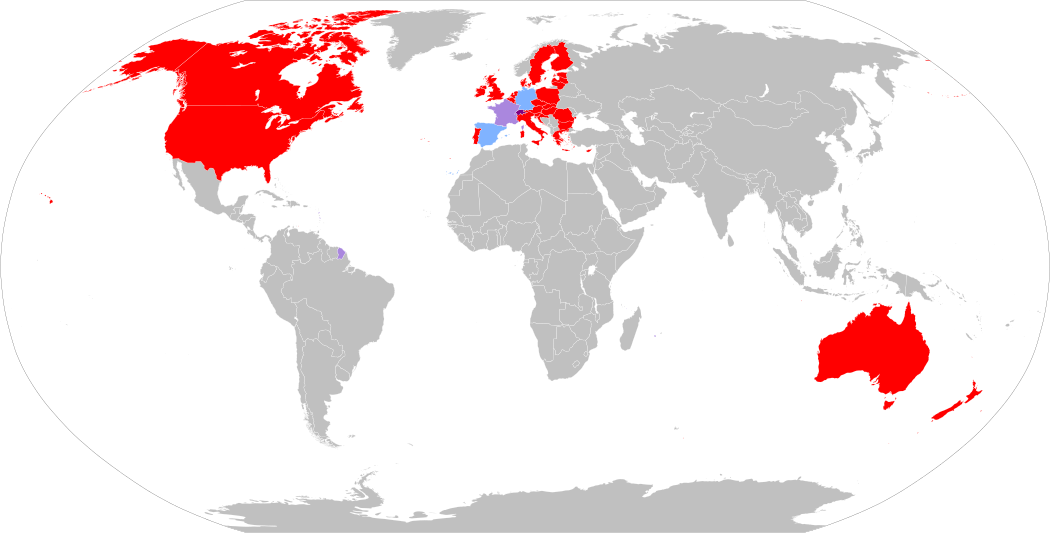
In response to the June 2019 Leipzig court ruling, German Agriculture Minister Julia Klöckner stated chick culling was "ethically unacceptable" and argued it should be prohibited.[38] The Grand Coalition agreement of March 2018 stated that chick culling should have been ended 'by the middle of the current legislative period', which would have been in October 2019, but this goal was not met.[23] At that time, gassing was the most common method of chick culling in Germany, which killed up to 50 million chicks a year.[23] Although the federal government had already invested millions of euros in stimulating scientific research into two alternative methods for sex determination in eggs by then, these were still not ready for the market yet.[23]
In September 2019, in Switzerland, the parliament voted to outlaw the shredding of chickens. This is despite this practice not being used in Switzerland. It was further commented that: “This tendency to rear species only for the production of eggs or for meat turns animals into mere objects. It has led to absurd practices such as the shredding of living male chicks”. However, the practice of gassing chicks, which kills about three million male baby chicks in Switzerland per year, remained legal.[28]
In late October 2019, French Agriculture Minister Didier Guillaume told France Inter: 'We announced last week with my colleague, German Minister for Agriculture [Julia Klöckner], that we were going to stop the shredding of chicks, which is no longer bearable today. We said end of the year 2021.' He further argued that the practice needed to be phased out and not immediately discontinued: 'If we do it right away, what will happen? There won't be eggs anymore.'[40]
On 13 January 2020, during an official visit of Guillaume to Klöckner, the Ministers said in a joint statement that France and Germany wanted to end the mass shredding of male chicks at the EU level by the end of 2021. Guillaume stated that 'France and Germany should be the European motor to advance on this issue', with Klöckner adding that Germany's EU presidency in the second half of 2020 was a good opportunity to do so. The countries planned to bring together various groups to share scientific knowledge and implement alternative methods.[41] On 28 January 2020, Guillaume repeated at a press conference that the culling of unwanted male chicks (by shredding) would be outlawed in France by the end of 2021.[42] While some animal rights activists welcomed the move, others said that the decision did not go far enough.[39] The minister's entourage told Agence France-Presse that it was unclear whether his announced ban also included asphyxiation by CO2[43] (which was excluded from the Swiss ban[42]), pressing him to explicitly prohibit that chick culling method as well.[43]
In early February 2020, four Dutch animal rights organisations sent letters to Prime Minister Mark Rutte and the Parliamentary Commission on Agriculture urging them to follow the examples given by Switzerland and France, and phase out all chick culling including gassing in the Netherlands by the end of 2021.[44] The Dutch Ministry of Agriculture cautiously responded that 'a political solution is being explored' and that the Agriculture Minister would soon provide more information.[45] In March 2020, the Directorate of Production and Agrarian Markets of the Spanish Ministry of Agriculture stated that it is working with egg producers to end the annual culling of 35 million male chicks in Spain in 2021. The Ministry said producers were testing two different techniques of in-ovo sex detection.[27]
In January 2021 the German federal government approved a draft law banning chick culling, to be effectuated at the end of 2021.[46] If passed by the Bundestag, Germany will become the first country in the world to ban this practice, confirming its joint commitment with France made in January 2020.[47]
Business efforts (2018–present)
Currently, the following businesses (producers, distributors and retailers) are in the process of introducing no-kill eggs (also called 'brotherless eggs') and phasing out kill eggs:
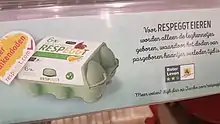
- German supermarket chain REWE is one of the main stakeholders of the Dutch–German Seleggt company that developed the first no-kill eggs. Under the label of Respeggt, these no-kill eggs were first introduced in 350 supermarkets and shops of REWE and Penny in the Berlin region in November 2018.[45] By September 2019, Respeggt eggs were sold in 1,350 REWE shops.[45]
- German supermarket chains Edeka, Marktkauf and Famila introduced brotherless eggs in 2019.[48]
- French retail multinational Carrefour, Fermiers de Loué and German group Agri Advanced Technologies (AAT) introduced no-kill eggs in France in December 2019.[49] On 10 February 2020, Carrefour announced it planned to mark the package of no-kill eggs with special logos, to have 20% of all its eggs sold without chick culling by 1 May 2020, and to completely produce and sell all eggs with the AAT method before the end of 2021.[22] The number of Carrefour locations that sold AAT-style eggs grew gradually in the first half of 2020.[48]
- In early February 2020, French egg distribution business Cocorette announced it would collaborate with poultry company Novoponto to produce no-kill eggs using Seleggt's technology.[22]
- The German supermarket chains Aldi Nord and Aldi Süd announced in March 2020 they wanted to phase out chick culling in their entire chain before 2022. Aldi Netherlands was still considering its course as of May 2020.[45]
- Dutch supermarket chain Jumbo was the first company in the Netherlands to start selling Respeggt eggs. Since mid-March 2020, all Jumbo supermarkets (more than 600 locations in the Netherlands and a few in Belgium) had them in store, and organic Respeggt eggs are planned to be introduced later in 2020.[45]
- Dutch supermarket chain Coop (over 300 locations) will start selling free range Respeggt eggs in September 2020.[45]
The following businesses are considering or have committed to introducing no-kill eggs and phasing out kill eggs:
- In 2016, United Egg Producers, representing hatcheries that produce 95% of all eggs in the United States, reached an agreement with The Humane League that it would voluntarily phase out chick culling by 2020, or as soon as it was 'economically feasible' and an alternative was 'commercially available.' In January 2020, UEP president Chad Gregory said 'a workable, scalable, solution is not yet available', but remained 'a priority and the right thing to do' and that the UEP are 'hopeful a breakthrough is on the horizon'. The Humane League president David Coman-Hidy was similarly optimistic about the technological progress made and remains confident that alternatives will be soon be put in place 'in order to spare the lives of the estimated 300 million male chicks that are killed every year in the U.S. alone'.[30]
- Albert Heijn, the largest Dutch supermarket chain, with 1000 locations in the Netherlands and Belgium, stated in May 2020 that they are 'meticulously monitoring the technological developments, and when it's operationally feasible, we will enable it.'[45]
See also
References
- Krautwald Junghanns, ME; Cramer, K; Fischer, B; Förster, A; Galli, R; Kremer, F; Mapesa, EU; Meissner, S; Preisinger, R; Preusse, G; Schnabel, C; Steiner, G; Bartels, T (1 March 2018). "Current approaches to avoid the culling of day-old male chicks in the layer industry, with special reference to spectroscopic methods". Poultry Science. 97 (3): 749–757. doi:10.3382/ps/pex389. PMID 29294120.
- Saul, H. (March 5, 2015). "Hatched, discarded, gassed: What happens to male chicks in the UK". Retrieved July 1, 2015.
- Blakemore, Erin (2016-06-13). "Egg Producers Pledge More Humane Fate for Male Chicks". Smithsonian.
- Rodenburg, T. B.; Bracke, M. B. M.; Berk, J.; Cooper, J.; Faure, J. M.; Guémené, D.; Guy, G.; Harlander, A.; Jones, T. (December 2005). "Welfare of ducks in European duck husbandry systems". World's Poultry Science Journal. 61 (4): 633–646. doi:10.1079/WPS200575. ISSN 1743-4777.
- Hughes, I. (2014). "Shocking video shows hundreds of live ducklings 'thrown into mincer' on cruel 'foie gras farm'". The Mirror. Retrieved March 14, 2015.
- "U.S. Chicken Industry History". The National Chicken Council. Retrieved 2019-10-10.
- Le Blond, Josie (December 22, 2018). "World's first no-kill eggs go on sale in Berlin". The Guardian. Retrieved February 17, 2020.
- "Eéndagshaantjes: zijn er alternatieven?". Vlaams infocentrum voor land- en tuinbouw (in Dutch). 4 February 2020. Retrieved 22 May 2020.
- Humane Killing of Male Chicks at the Laying Branch Archived September 27, 2007, at the Wayback Machine
- Saraswathy, M. "Unilever working to end the culling of male chicks". Business Standard. Retrieved February 5, 2015.
- Council of the European Union (22 December 1993). "Council Directive 93/119/EC of 22 December 1993 on the protection of animals at the time of slaughter or killing". Official Journal of the European Union (available on EU-Lex). Publications Office of the European Union. Retrieved 24 May 2020.
- Council of the European Union (24 September 2009). "Council Regulation (EC) No 1099/2009 of 24 September 2009 on the protection of animals at the time of killing". Official Journal of the European Union (available on EU-Lex). Publications Office of the European Union. Retrieved 24 May 2020.
- "AVMA Guidelines for the Euthanasia of Animals: 2020 Edition* - M1.4 Carbon Monoxide - M3.6 Cervical Dislocation - M3.10 Maceration" (PDF). American Veterinary Medical Association. 2020. pp. 26–27, 44, 47. Retrieved January 26, 2020.
- Kahler, Susan C (September 1, 2006). "Executive Board meets pressing needs". American Veterinary Medical Association. Retrieved February 17, 2020.
- Fassler, Joe; DiPrinzio, Harry (15 July 2016). "The cure for culling". The New Food Economy. Retrieved 18 August 2016.
- Shannon, Joel. "France bans mass killing of male chicks, but US egg farmers say there's no other 'workable' solution". USA TODAY.
- Esther Han (11 June 2016). "Egg industry wants to stop grinding and gassing millions of male chicks to death". The Sydney Morning Herald. Retrieved 22 May 2020.
- Josie Le Blond (22 December 2018). "World's first no-kill eggs go on sale in Berlin". The Guardian. Retrieved 22 May 2020.
- Kees de Vré (9 October 2013). "Redder van de nutteloze haantjes". Trouw (in Dutch). Retrieved 22 May 2020.
- "Shredding day-old chicks: how Australia's egg industry works". ABC Online. 20 July 2016. Retrieved 22 May 2020.
- Melanie Epp (19 December 2016). "Hypereye: A game changer". Canadian Poultry Magazine. Retrieved 22 May 2020.
- Fanny Ohier (10 February 2020). "Carrefour et Loué s'associent pour réduire le broyage des poussins mâles". France Inter (in French). Retrieved 22 May 2020.
- Dirk Fisser (23 October 2019). "Groko bricht Versprechen: Vergasung von männlichen Küken geht weiter". Schleswig-Holsteinischer Zeitungsverlag (in German). Retrieved 21 May 2020.
- Chris Koenis (24 May 2016). "Doorbraak Nederlands bedrijf voorkomt vergassen miljoenen kuikens". RTL Nieuws (in Dutch). Retrieved 22 May 2020.
- Anne Beston (7 April 2001). "Chick-shredding ordeal shocks unprepared staff". The New Zealand Herald. Retrieved 22 May 2020.
- Catherine Harris (12 June 2016). "Poultry industry hails potential to avoid male chick cull". Stuff (website). Stuff Ltd. Retrieved 22 May 2020.
- Aurora Cancela Pérez (27 March 2020). "El sacrificio de pollitos macho en España podría terminar en 2021 según el Ministerio de Agricultura". Crónica Norte (in Spanish). Retrieved 21 May 2020.
- Vuilleumier, Marie (September 20, 2019). "Switzerland bans shredding of male chicks". Swissinfo. Retrieved February 19, 2020.
- Louise Gray (4 November 2010). "40 million chicks on 'conveyor belt to death'". The Daily Telegraph. Retrieved 22 May 2020.
- Michael Brice-Saddler (30 January 2020). "France says its poultry industry will stop shredding male chicks alive by 2022". Washington Post. Nash. Retrieved 21 May 2020.
- Wray, Meaghan (January 16, 2020). "Germany, France push to end male chick 'shredding' in European Union". Retrieved February 17, 2020.
- Gillick, Kathryn (April 22, 2003). "DA asks for more information in chicken chipping case". United Poultry Concerns. Retrieved February 17, 2020.
- Toliver, Zachary (March 13, 2017). "Treated Like Garbage, These Chicks Are Burned, Drowned, and Walked On". PeTA. Retrieved February 17, 2020.
- "Egg laying and male birds". Vegsoc.org. Archived from the original on February 22, 2009.
- Lin, Doris (January 8, 2018). "What Are Animal Rights?". ThoughtCo. Retrieved January 26, 2020.
- Vogel, Gretchen (August 14, 2019). "'Ethical' eggs could save male chicks from mass slaughter". Science Magazine. Archived from the original on December 19, 2019. Retrieved August 26, 2019.
- Ryan, Jackson (March 7, 2019). "How CRISPR could save 6 billion chickens from the meat grinder - Red light, green light". CNET. Retrieved February 17, 2020.
- "German court rules mass-killing of male chicks legal". BBC News. 13 June 2019. Retrieved 21 May 2020.
- "France to ban culling of unwanted male chicks by end of 2021". BBC News. 29 January 2020. Retrieved 29 January 2020.
- "Le « broyage des poussins » devrait être interdit en France à la fin de 2021". Le Monde (in French). 30 October 2019. Retrieved 21 May 2020.
- AFP (13 January 2020). "Germany, France to push EU to end shredding of male chicks". France 24. Retrieved 21 May 2020.
- AFP (28 January 2020). "La France veut interdire la castration à vif des porcelets et le broyage des poussins à la fin de 2021". Le Monde (in French). Retrieved 21 May 2020.
- Caroline Quevrain (28 January 2020). "Quatre questions sur la fin annoncée du broyage des poussins mâles". La Chaîne Info (in French). Retrieved 21 May 2020.
- Martijn van Rossum (4 February 2020). "Dierenorganisaties willen verbod op doden kuikens". Nieuwe Oogst (in Dutch). Retrieved 21 May 2020.
- Hans Bijleveld & Kirsten Graumans (21 May 2020). "De opmars van geslachtbepaling bij broedeieren". Boerderij.nl (in Dutch). Retrieved 21 May 2020.
- "Kükentöten wird verboten". German Federal Government. 20 January 2021. Retrieved 23 January 2021.
- Agence France-Presse (20 January 2021). "Germany approves draft law to end mass culling of male chicks". The Guardian. Retrieved 21 January 2021.
- Fabian Brockotter (24 April 2020). "Novel techniques make culling male layers obsolete". Poultry World. Retrieved 22 May 2020.
- "Carrefour, premier distributeur à implanter une technique pour mettre fin à l'élimination des poussins mâles" (in French). Carrefour. 10 February 2020. Retrieved 22 May 2020.
External links
| Wikimedia Commons has media related to Unwanted chick killing. |
- Hatchery Horrors: The Egg Industry's tiniest victims. Mercy for Animals. (includes graphic video on culling)
- 6 Crimes Against Nature Perpetrated By the Food Industry. Popular Resistance. December 27, 2013.
- Germany Ponders the Super Chicken. Der Spiegel. October 16, 2013.
- The short, brutal life of male chickens. Al Jazeera America. February 20, 2015.
- Animal Equality investigation in chicken hatcheries. Animal Equality via YouTube. November 25, 2015.
- Stop killing male chicks: We can save billions of animal lives from meeting a gruesome end. Gene Baur for the New York Daily News. February 8, 2020.